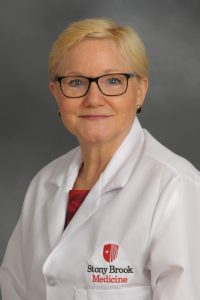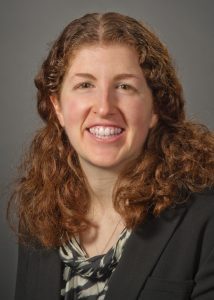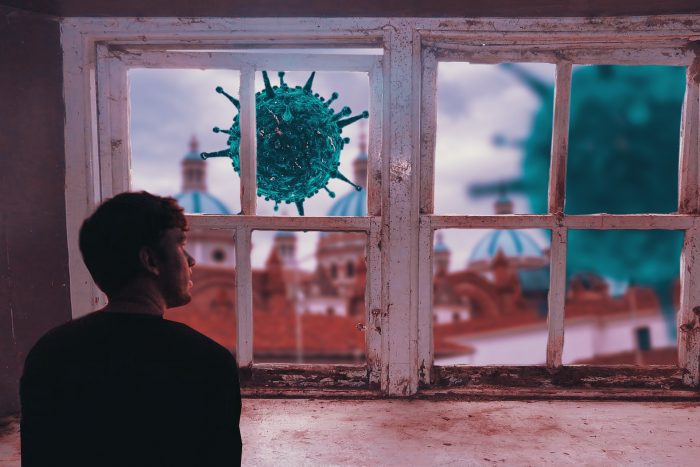By Daniel Dunaief
For many local health care workers, the pandemic transitioned from triggering uneasiness about reports of a respiratory illness coming out of China to a significant threat to area residents.

Health care workers were in an all-out scramble to save lives even as information about the disease, its course and treatment, changed.
Five years after the start of a world-altering pandemic, infectious disease experts and emergency medicine specialists shared a range of thoughts about their initial reactions and concerns about this illness as well as insights about lessons learned and readiness to manage through future significant health threats.
Dr. Susan Donelan, Medical Director of Healthcare Epidemiology at Stony Brook Medicine, remembers raising questions about this virus towards late December of 2019. People urged her to go home and have a nice Christmas.
When Hospital CEO Carol Gomes called her on a Sunday and told Donelan she had an hour to get back to her, she recognized the approaching storm.
“I remember saying, ‘It’s a Sunday and she needs me in an hour,’” Donelan recalled. “We’re in it.”
Indeed, over the following months and, as it turned out, years, doctors dealt with numerous unknowns amid a fluid situation that threatened the population and, in particular those who were immunocompromised, had diabetes or respiratory or cardiac issues.
“People forget how bad things were,” said Dr. Gregson Pigott, Commissioner of the Suffolk County Department of Health Services. “So many people were dying” that hospitals needed to figure out where to put the deceased.
Residents also lined up to get the scarce tests for the presence of the virus and often waited days or longer for a result.
Fluid situation
Health care professionals were reacting to a fluid situation in which best practices in terms of treatment and prevention changed even as the virus was mutating.
“It seems like a blur, going back and thinking about those moments,” said Dr. Jennifer Goebel, emergency room doctor at Huntington Hospital. “It was very surreal, taking care of a disease process you knew nothing about and attempting to be the expert when we were still learning.”
Federal, state and county health officials were unsure of the best guidance for a range of safety measures, including the use of masks.
Additionally, health care experts struggled with the level of contagion based on different environments.
“I don’t think anyone really knew about the continuum that could occur depending on the ambient circumstances,” said Donelan. “I think we probably could have done a better job of letting the public know that our communications would evolve as our knowledge evolved.”
Sharing safety messages
During the worst of the pandemic, health care professionals struggled to share messages that would help people make informed decisions about protecting themselves, their families and their communities.

“Trust in public health was completely undermined,” said Dr. Sharon Nachman, Chief of the Division of Pediatric Infectious Diseases at Stony Brook Children’s Hospital “That hurt all of us.”
Nachman also listened to health care professionals on national TV who were discussing the health crisis. These pundits were sharing information that included far too many inaccessible words and concepts.
“Smart professionals were talking” but people weren’t understanding them, she said.
Additionally, the echo chamber of social media distorted messages, often questioning the developing science and best practices, suggesting conspiracy theories as well as treatments that were either unproven or ineffective.
Having local professionals from area hospitals made a difference on Long Island, Nachman said.
Whenever Nachman went to ShopRite, people who knew she was a part of their community saw her and asked questions.
“When it’s someone local from Northwell, Stony Brook, NYU Winthrop or others, [local communication] really works better,” she said.
Goebel added that she continues to share her medical knowledge not only with patients, but also with family members who have come to the hospital to provide support.
Hospitals, for their part, learned their lesson about stocking personal protective equipment.
“People have learned their lessons” at hospitals, said Pigott. “We need a more adequate stock of PPE.”
Health care provider PTSD
During the worst of the pandemic, one in five doctors who responded to an American Medical Association poll in 2022 said it was likely they would leave their practice within two years.

“It was so staggering to hear some of these numbers,” said Goebel. Doctors go through over a decade of training. Seeing so many people leave was difficult.
Health care workers struggled, and continue to struggle, with memories and experiences in the midst of a crisis that killed millions around the world.
“I remember going to room nine, intubating a patient and being called to bed 12 and intubating another patient, within a matter of minutes,” said Goebel.
As the director of wellness in the Emergency Medicine Service Line, Goebel has created new initiatives to help reduce burnout and provide support.
She developed a peer to peer pilot program that started in September in which new physicians, physician’s assistants and nurse practitioners were matched with a more experienced professional from day one.
The effort is designed to help new staff navigate the health system and address any questions or concerns.
“We’re looking to put these processes in place” throughout Northwell, Goebel said.
Remote medicine
While remote medical choices, such as telehealth, predated the pandemic, these options have become increasingly common, particularly for residents who might struggle to get to a medical visit.
“Because people were forced to use it, with practice, they got better at it,” said Pigott.
Many organizations invested more in telehealth, which also reduces the burden on Emergency Departments.
Teleheatlh has its “risks and benefits,” said Goebel, as it can keep patients who might be vulnerable out of an environment where they might otherwise be exposed to other pathogens.
Goebel appreciates the importance of a visit with a doctor, who can differentiate between an ear ache and a potential indication of shingles.
Fortunately, for many people, Covid has become a much more manageable infection.
Pigott contracted Covid in September. He took Paxlovid, which helped knock out the symptoms within three days.
Pigott is also grateful for vaccines, which provided a dramatic reduction in mortality during the worst of the pandemic, particularly for people who are over 65.
The vaccine was “saving lives,” said Pigott. “There was real evidence that these are doing their jobs and are working out.”








